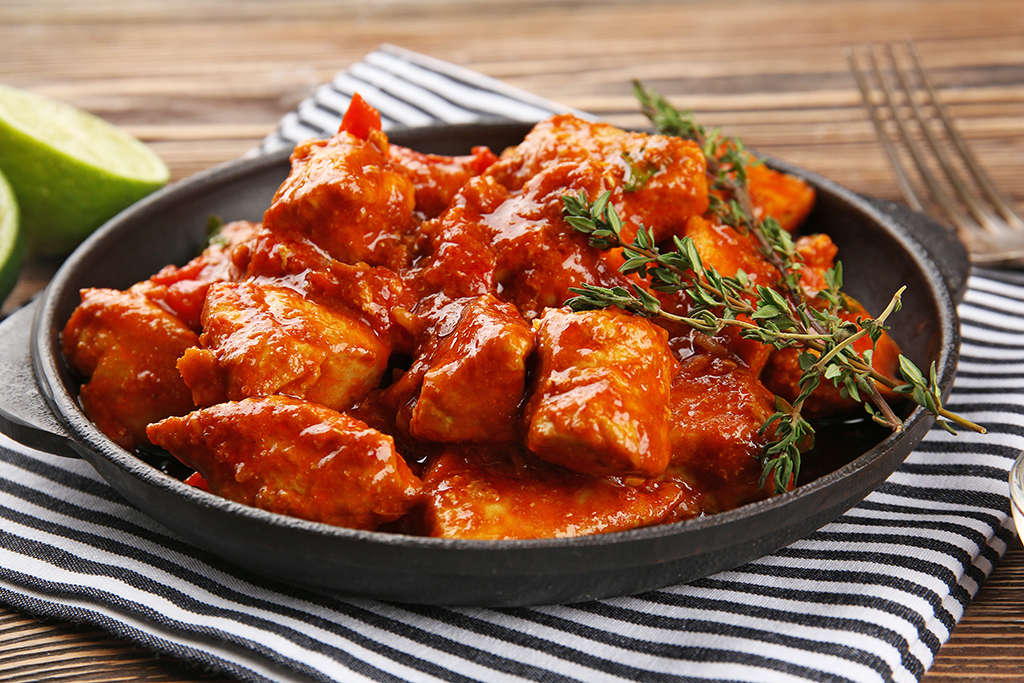We all know that Scotland is the land of invention, but alongside the country’s biggest achievements are many lesser known gifts that Scotland has given to the world.
We present 10 of the best.
1. Gin and Tonic
Edinburgh-born physician George Cleghorn gave the world the delectable delights of the Gin & Tonic. This classic combination was discovered when Cleghorn uncovered the malaria-beating power of quinine, a component of tonic water. On sampling the new medicine it was found to be too bitter and so gin was added to make it more palatable. And the rest is deliciously quaffable history
2. Chicken tikka masala

Ali Ahmed Aslam, the proprietor of the Shish Mahal restaurant in Glasgow, is reckoned to have invented the dish one night when a bus driver ordered a curry at the end of his shift. When his food arrived, the driver sent it back to the kitchen, claiming that it was dry. Aslam was eating a bowl of tomato soup and decided to add some soup, along with a handful of spices, before returning it to the bus driver. He loved it so much that he brought his friends to the restaurant and the dish became so popular that it was added to the menu.
3. Hypnotism
A surgeon from Kinross-shire was the father of modern hypnotism. James Braid’s interest in the subject was piqued when he examined the subjects of Charles Lafontaine during his ‘animal magnetism’ show and concluded that they were indeed in an altered physical state. Braid began by sending himself into a trance-like state and continued to experiment on others by asking them to stare at a candle until their concentration and vision altered their consciousness, proving that this state could be achieved without the aid of a mesmerist.
4. The flushing toilet

Contrary to popular opinion that says Thomas Crapper invented the loo as we know it, the world has a Scottish watchmaker to thank for the flushing toilet. Alexander Cumming was the first to patent the S-shaped trap design in 1775 with the intention of stopping sewer gases from entering buildings. Cumming was employed by the 3rd Duke of Argyll as an organ builder and clockmaker at Inveraray before going on to revolutionise the plumbing industry and run a clock shop in London.
5. Tractor Beam
Yes, this may sound like pure science fiction, but in 2014 physicists at the University of Dundee used energy from an ultrasound ray to exert force behind an object and pull it towards the energy source. Next on their agenda is a Doctor Who style sonic screwdriver, so watch this space.
6. The Ku Klux Klan
The feared white supremacist movement is one export that Scotland is less proud to be associated with. It began when six men from Buchan immigrated to the US and joined the Confederate cavalry during the American Civil War. They had been members of a secret society of ‘horse whisperers’ in Scotland and set up a similar society in the US, although the organisation changed when Nathan Forrest became Grand Wizard in 1867 and began a reign of torture and murder. The Klan adopted the Scottish tradition of burning crosses, which was originally used as a declaration of war between rival Scottish clans.
7. Criminal fingerprinting

Henry Faulds was born in Beith, North Ayrshire before moving to Glasgow and then becoming a medical missionary in Japan. It was when accompanying an archaeologist friend on a dig that he became aware of the fi ngerprints left on fragments of ancient clay. After examining the tips of many fingers he became convinced that the pattern of lines on each was unique. It wasn’t until the Japanese hospital in which Faulds worked was robbed that he tested his theory on the suspect, finding the man to be innocent.
8. Speedos
Alexander MacRae from Kyle of Lochalsh immigrated to Australia, where he set up a swimwear brand named Fortitude, taken from the motto of the clan MacRae. The name Speedo was adopted when Captain Jim Parsons came up with the slogan ‘Speed on in your Speedos.’ Their bare-chested swimming shorts drew plenty of attention when first worn by the Aussie men’s swim team at the 1936 Berlin Olympic games.
9. Rock music
Elvis Aaron Presley changed the face of music completely when he released Heartbreak Hotel in 1956. But few know that the King’s roots lie in rural Aberdeenshire. Without Elvis there would have been no rock n’ roll and without his ancestors from the village of Lonmay, there would have been no Elvis.
10. Lime cordial
Lime juice was a staple for sailors in the Royal Navy following the discovery that scurvy was caused by a lack of vitamin C in 1753. A daily ration of lime juice, preserved with a healthy dose of rum, was given to all British sailors, leading to the nickname ‘limeys’. However, it was Lauchlan Rose who first used sugar to preserve lime juice in 1867, creating lime cordial. His first factory on Commercial Street in Leith was conveniently located by the Old East Dock and the business expanded from there to London and beyond.
TAGS

